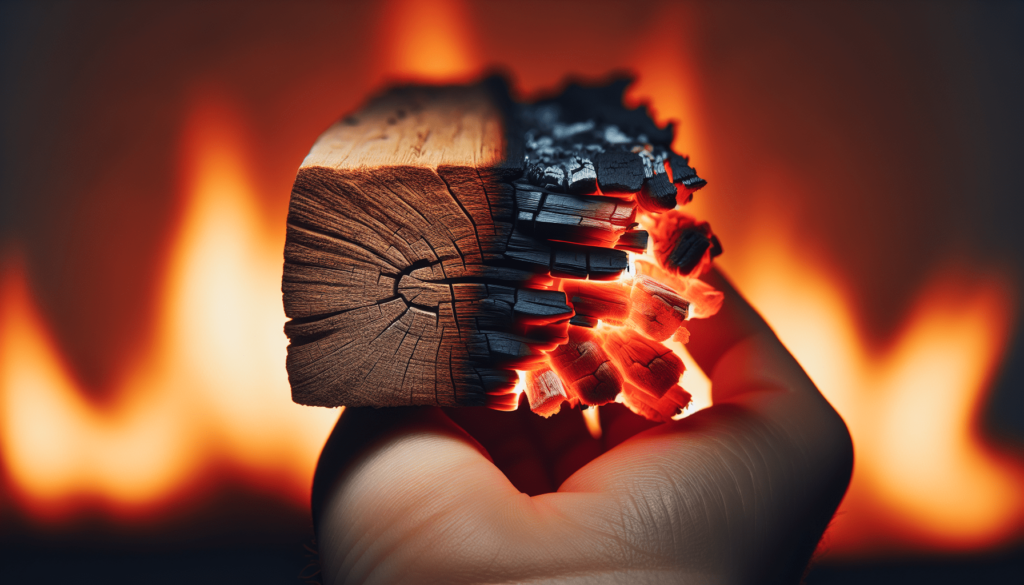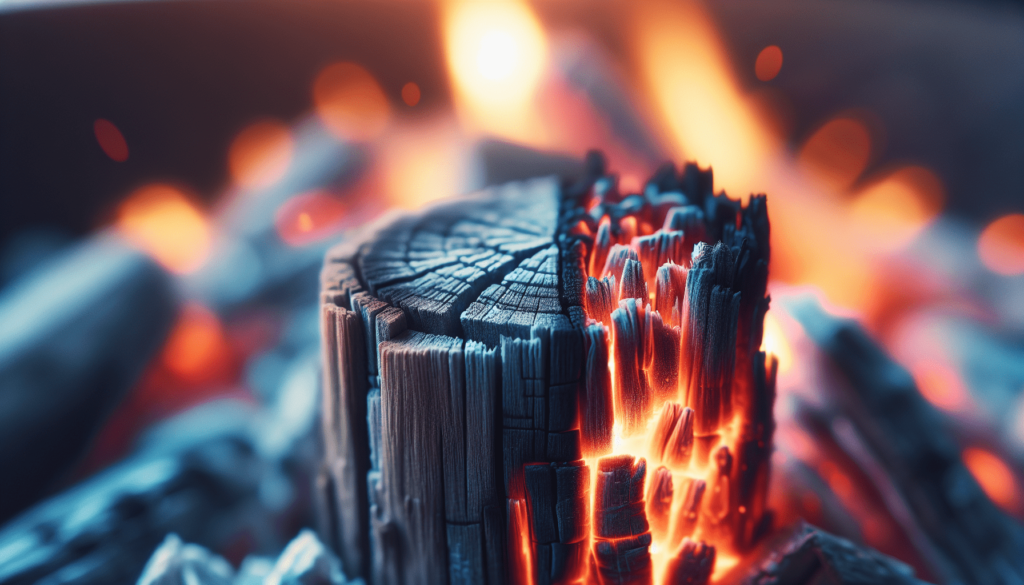One of the most fascinating transformations in nature occurs when wood meets flame. As I sat by the campfire, watching the dancing flames consume the logs, I found myself pondering the magic behind the process. This article delves into the science and terminology of burning wood, exploring the combustion process, the byproducts produced, and the terms we use to describe this age-old practice. Whether you’re a seasoned camper or simply curious about the elements, understanding what truly happens when you burn wood can deepen your appreciation for this natural phenomenon. What do you call when you burn wood?
Hey there, ever found yourself by a cozy fireplace, watching the wood slowly turn to ash and wondered, “What exactly is this process called?” I mean, there’s something so elemental and primal about burning wood, but do you know exactly what’s happening scientifically or even the terminology around it? Let’s dive into this fascinating transformation and see if we can make sense of all it.
The Basics: What Happens When Wood Burns
A Little Fire Science
Alright, here’s a crash course in what you see when wood burns. Wood combustion is a chemical reaction that happens when the wood reacts with oxygen in the air, producing heat, light, water vapor, and carbon dioxide. This might sound simple, but there’s so much more going on beneath the surface—or should I say, within the wood fibers.
Stages of Wood Burning
There are essentially three stages when you burn wood – and trust me, it’s more interesting than just watching the logs turn to ash.
-
Drying (Evaporation of Water)
- When you first light a piece of wood, the initial heat causes any moisture in the wood to evaporate. Even if the wood seems dry, there’s usually some water content that needs to be dealt with first.
-
Pyrolysis (Breaking Down of Cellulose)
- Once the water is out, the heat starts to break down the cellulose and hemicellulose (essentially the building blocks of the wood). This is called pyrolysis, and it produces gases like carbon monoxide and methane, along with solid char.
-
Flaming Combustion (Actual Burning)
- Now, these gases ignite into visible flames when they reach a certain temperature, combining with oxygen. This is the stage where you get the bright, dancing flames.
-
Charcoal Burning
- Finally, as the volatile gases are burned off, the remaining charcoal continues to burn, giving off a more subdued heat but lasting longer than the initial flames.
Fun Fact: Why Does Wood Crackle?
The magical, comforting crackle of burning wood is actually a result of pockets of trapped moisture in the wood. When the moisture heats up, it turns into steam and causes the wood to split open, making that quintessential campfire sound.
Terminology: What Do You Really Call It?
Okay, I know you’re itching for the main answer to the question. What do we call it when we burn wood?
Combustion
In the most basic scientific terms, the process is called combustion. This is a broader term that encompasses any burning process, whether it’s wood, gasoline, or your toast when you leave it in the toaster too long.
Pyrolysis
During the second stage, where the wood starts breaking down due to heat but isn’t necessarily flaming yet, it’s called pyrolysis. This term comes from the Greek words “pyro,” meaning fire, and “lysis,” meaning breaking down. It’s like the wood’s going through a little pre-burn transformation.
Oxidation
Another term that sometimes gets thrown around is oxidation, which is a more general chemical term. When you burn wood, you are actually oxidizing it – basically a fancy way to say the wood is reacting with oxygen.

Smoke and Ash: What’s Left Behind?
Components of Smoke
When wood burns, it doesn’t just disappear into thin air. Quite the opposite, actually. The leftover byproducts are what we see as smoke and ash.
- Water Vapor: This is a major component and forms when hydrogen in the wood combines with oxygen.
- Carbon Dioxide and Carbon Monoxide: You breathe out CO2, and wood breathes it out when burned.
- Volatile Organic Compounds (VOCs): These are like the pop stars of the combustion process – flashy and colorful. Benzene, toluene, and formaldehyde are just a few VOCs that are released.
- Particulates: These tiny particles are a mixture of both solid and liquid found in the air, leading to that smoky appearance.
Leftover Ash
Ah, ash, the unsung hero of burnt wood. Ash is primarily composed of minerals like calcium, potassium, and magnesium. Ever wonder why it stays behind while everything else turns to smoke? That’s because these minerals have high melting points and don’t volatilize easily at the temperatures common in wood burning.
| Component | Description |
|---|---|
| Water Vapor | Formed when hydrogen in the wood combines with oxygen |
| Carbon Dioxide | Major product of combustion, same stuff you exhale |
| Carbon Monoxide | A bit more hazardous, also a product of combustion |
| VOCs | Volatile Organic Compounds; include substances like benzene, toluene, and formaldehyde |
| Particulates | Tiny particles adding to the smoke’s appearance |
| Ash | Minerals like calcium, potassium, and magnesium that have high melting points |
Why We Love Burning Wood
Nostalgia and Comfort
Ever noticed how a fire sets the mood for the evening? There’s something inherently comforting about gathering around a fire, whether it’s a fireplace in your living room or a campfire under the stars. It appeals to our ancient instincts of warmth and security.
Practical Uses
Of course, wood burning isn’t just about nostalgia. It’s a practical resource for heating homes, cooking food, and even generating power in some parts of the world.

Environmental Impact of Burning Wood
The Upside
Burning wood is often considered carbon-neutral. The carbon dioxide that is released during combustion is roughly equal to the carbon dioxide the tree absorbed during its lifetime. So, in a way, you’re just returning borrowed goods.
The Downside
However, there are some significant downsides. Smoke from burning wood contains particulate matter and other pollutants that can contribute to air quality issues and health problems. So while your cozy fireplace may feel idyllic, it’s important to burn wood responsibly.
Sustainable Practices
There are ways to make wood burning more eco-friendly:
- Seasoning Wood: Well-seasoned (properly dried) wood burns cleaner and more efficiently.
- Using Efficient Stoves: Modern stoves and fireplaces are designed to burn wood more completely, reducing the number of pollutants released.
- Burning Responsibly: Avoid burning treated wood, as it can release harmful chemicals.
The Cultural Significance
Rituals and Traditions
Throughout history and across cultures, fire and wood burning have held significant ritualistic and cultural importance. Think about bonfires on Guy Fawkes Night in the UK, the Yule log tradition around Christmas, or even the ceremonial lighting of the Olympic flame. Fire has always been a symbol of transformation, purification, and enlightenment.
Folk Tales and Literature
Fire and burning wood have been immortalized in literature and folklore for centuries. From the mystical flames in Harry Potter to the dance around campfires in Native American traditions, fire symbolizes a mystical force that brings people together and spurs the imagination.
FAQs About Burning Wood
Isn’t Wood Smoke Harmful?
Yes, wood smoke can be harmful due to the particulates and chemicals it contains. Always ensure good ventilation and consider using advanced wood-burning stoves that meet EPA requirements.
What’s the Best Wood for Burning?
Hardwoods like oak, maple, and hickory tend to burn hotter and longer than softwoods like pine or fir. However, softwoods are easier to light and get going.
Can I Burn Treated Wood?
Absolutely not! Treated wood can release toxic chemicals when burned. Stick to natural, untreated wood for your fires.
What About Using Wood Pellets?
Wood pellets are a fantastic alternative. They are manufactured from compressed sawdust and other wood materials. They burn efficiently and produce less ash and smoke than traditional logs.
Final Thoughts
So, the next time you’re enjoying the warmth and ambiance of a fire, you can dazzle your friends with all your newfound knowledge on the subject. From the term “combustion” to understanding the ins and outs of pyrolysis, you’re now well-equipped to appreciate the marvel that is burning wood. Not just for its simplicity but for the rich tapestry of science, culture, and comfort it brings into our lives.
And there you have it! Whether it’s the primal crackle of a campfire or the cozy glow of a fireplace, burning wood is a fascinating phenomenon that’s been a part of human life for centuries. So, what do you call it when you burn wood? Now you know it’s a whole lot more than just watching logs turn into ash—it’s a complex process rich in science and tradition.
Until next time, go build a fire and ponder about the marvels of combustion!

